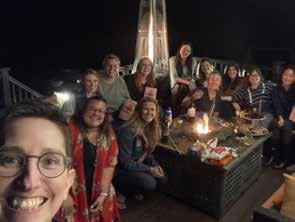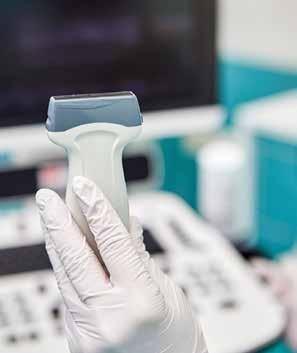AAEM/RSA PRESIDENT'S MESSAGE
Addressing the Social and Structural Determinants of Health in Medical School and Residency Education Jennifer Rosenbaum, MD – Vice President, AAEM/RSA
In light of the ongoing COVID-19 pandemic and increased focus on social justice, physicians are more aware that patients’ social determinants effect their health. These times are also highlighting how the structural determinants, which include government process and economic and social policies, are effecting their patients. As the safety net of the health care system, emergency physicians have the privilege of taking care of any patient that walks through the door. We are often the frontline providers for underserved populations and we bear witness to the societal patterns of health inequity. Despite our advanced training, health care disparities persist. Social emergency medicine is an emerging branch of emergency medicine that investigates the interplay of the social determinants of health (SDH) and emergency medical care. As emergency medicine adapts to meet the needs of our patients, it is essential that social and structural determinants of health are incorporated into medical school and residency education.
medical schools varies. In 2019, when surveyed, medical schools were nearly split down the middle about whether the teaching of SDH was a low priority or a high priority.3 If the population’s health is to be improved, and if disparities in outcomes are to be reduced, medical schools and residencies must do a better job of incorporating the SDH into their curriculum.
Medical School Curriculum
Recently, many medical schools have developed creative ways to integrate public health into their coursework. During the preclinical years some medical schools have developed seminars and didactics on cultural competency, reformatted Objective Standardized Clinical Examinations (OSCEs) with cases highlighting the SDH, created a service-learning curriculum, or attempted to teach the SDH at the bedside through an emergency medicine clerkship.4 Creating a curriculum that emphasizes SDH is important, but some of these interventions have been critiqued for being flawed. A positive experience requires a considerable Medical education in the 20th ceninvestment of time and planning AS THE SAFETY NET OF THE HEALTH CARE tury was largely influenced by the on the part of academic instituSYSTEM, EMERGENCY PHYSICIANS HAVE THE Flexner Report, which called upon tions and faculty. For example, American medical schools to enact PRIVILEGE OF TAKING CARE OF ANY PATIENT THAT if service learning is not well higher admission and graduation WALKS THROUGH THE DOOR.” coordinated, it places burdens standards.1 It established the bioon community partners. Cultural medical model as the gold standard competency education has been integral in drawing attention to health of medical training and challenged U.S. medical schools to become more inequities, but it has also been criticized for being reductionist. It often inacademic. In response, medical schools redesigned their curricula to volves teaching homogenized ideas of culture that may overstate cultural focus on training physicians to practice using the scientific method and or racial differences and unintendedly reinforce stereotypes. Medical engage in original research. The Flexner Report was integral in creating educators must continue to re-examine their SDH curriculum to make standards for academic rigor. However, it is also contributed to racial sure its intentions are being met. bias in medicine and is partially responsible for the disproportionally low number of diverse physicians in the workforce today.2 Most Black mediResidency Curriculum cal schools in the early 20th century did not have the resources necesSeveral residency programs have SDH “tracks” for interested EM physisary to implement the standards that Flexner called for, and consequently cians in training. These may allow residents to focus on scholarly projwere shut down. In the 100 years since the Flexner Report, the Beyond ects and advanced professional development. However, to really narrow the Flexner Alliance (BFA) was created to address the disparities that the gap between health care and the community, it is important that all still exist today. The BFA’s mission is to promote social mission in health residents have this type of formal education. Emergency medical educaprofessional’s education. tors are uniquely positioned to incorporate structural competencies into Despite great strides in public health throughout the 20th century, historiresidency education. Emerging frameworks of structural competency call cally public health courses took a backseat to core basic science and for physicians to recognize that health outcomes are shaped by complex, clinical courses. Even presently, the extent to which SDH are taught by
>>
COMMON SENSE JANUARY/FEBRUARY 2021
45























